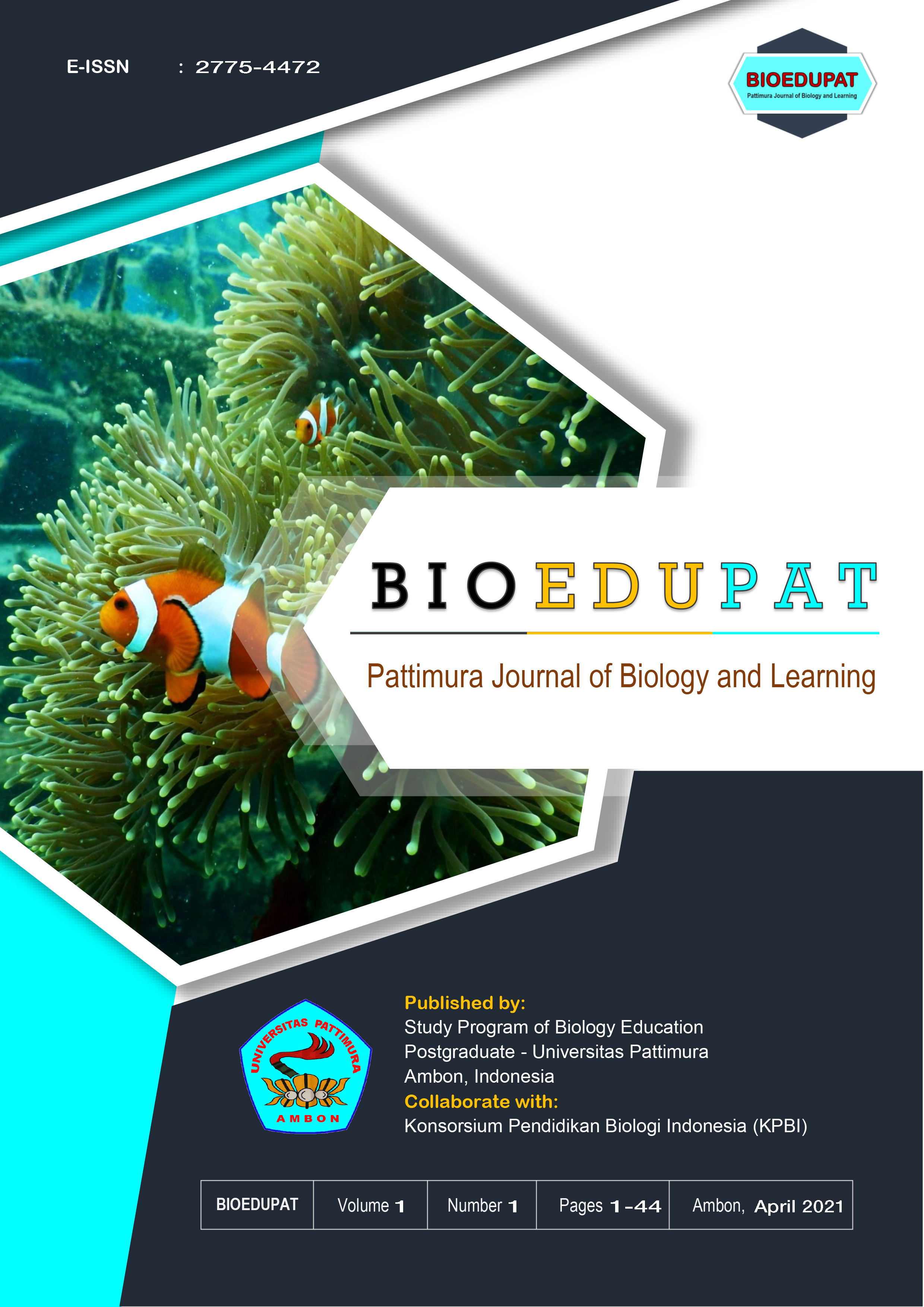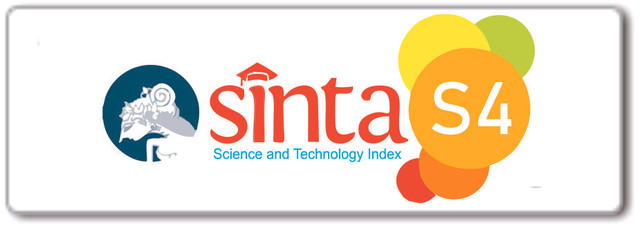Development of sasi culture based mangrove forest conservation instruction package to improve ecological knowledge of Amahai State Society, Central Maluku District
Abstract
Instructional Package is one of the learning media that can be used in the learning process and can increase public knowledge. This research aims to determine, (1) Development of an Instructional Package for Mangrove Forest Conservation Based on Sasi Culture in Amahai Region, (2) Knowing the Effectiveness of this Instructional Package in Improving Community Knowledge About Mangrove Forest Conservation Based on Sasi Culture in Amahai Region. And analyzed qualitatively and quantitatively. This research is development research using the dick and Carey model to produce an instructional package which will be tested in Amahai and Sehati villages with a sample for each village of 30 people using a test instrument to measure knowledge both pre-test and post-test, the behaviour group used the instructional package while the control group did not use the instructional package. The mean values obtained in the behavioral group were: for the pre-test 25% and the post-test 29%, while the mean scores for the control group were 25% for the pre-test and 26% for the post-test. To find out the effectiveness of the instructional package, normality is tested using Kolmogorov Smirnov with pre-test and post-test data, and the gain scores are declared normal, and the variance homogeneity test using levena is the value of the two groups is homogeneous and the test is different (t-test). with the significance value used is α 0.05. Thus, it can be concluded that the instructional package is effective and feasible to be used as a learning resource and can be used in the learning process
Downloads
References
Borg, W. R., & Gall, M.D. (1989). Educational research: An intoduction. Fifth Edition. Longman, New York. pp.773-775.
Dahuri, R. (2003). Keanekaragaman hayati laut (aset pembangunan berkelanjutan indonesia) [Marine biodiversity (Indonesia's sustainable development assets)]. Penerbit PT. Gramedia Pustaka Utama, Jakarta.
Fatma, P. (2015). Pengaruh Kemampuan Kerja, Lingkungan Kerja, dan Masa Kerja Terhadap Produktivitas Karyawan PT. Djarum SKM II Kudus. Skripsi. Universitas Muria Kudus.
Knapp, CN., Cochran, J., Chapin III, FS., Kofinas, G., & Sayre, N. (2013). Putting local knowledge and context to work for Gunnison sage-grouse conservation. Human-Wildlife Interactions, 7(2), 195-213.
Melay, S. (2018). Pengembangan paket instruksional ekologi berbasis budaya sasi dalam meningkatkan pengetahuan masyarakat tentang konservasi sumber daya alam [Development of an ecological instructional package based on the sasi culture in increasing public knowledge about natural resources conservation]. Disertasi. Universitas Negeri Jakarta.
Putrawan. M. (2014). Konsep-konsep dasar ekologi dalam berbagai aktivitas lingkungan [Basic ecology concepts in various environmental activities]. Alfabeta, Bandung.
Pattinama, W., & Pattipeilohy, M. (2003). Upacara sasi ikan lompa di negeri Haruru [Lompa fish sasi ceremony in Haruru Country]. Ambon: Kementrian Kebudayaan dan Pariwisata. Balai Kajian dan Nilai
Tradisional
Shirley, D. (2004). Statistik for research. Jhon Wiley dan Sons, West Virginia. pp. 184-186.
Zulfikar Judge & Marissa Nurizka. (2008). Peran hukum adat sasi laut dalam melindungi kelestarian lingkungan di desa Eti Kecamatan Seram Bagian Barat [The role of sasi laut customary law in protecting environmental sustainability in Eti Village, West Seram District]. Lex Jurnalica, 6(1), 30-61.
Copyright (c) 2021 Eva Moy Wonley, Fredy Leiwakabessy, Stevin Melay

This work is licensed under a Creative Commons Attribution-NonCommercial-ShareAlike 4.0 International License.
Authors who publish with BIOEDUPAT: Pattimura Journal of Biology and Learning agree to the following terms:
- Authors retain copyright and grant the journal right of first publication with the work simultaneously licensed under a Creative Commons Attribution License (CC BY-NC-SA 4.0) that allows others to share the work with an acknowledgment of the work's authorship and initial publication in this journal.
- Authors are able to enter into separate, additional contractual arrangements for the non-exclusive distribution of the journal's published version of the work (e.g., post it to an institutional repository or publish it in a book), with an acknowledgment of its initial publication in this journal.
- Authors are permitted and encouraged to post their work online (e.g., in institutional repositories or on their website) prior to and during the submission process, as it can lead to productive exchanges, as well as earlier and greater citation of published work.









 This work is licensed under a
This work is licensed under a 